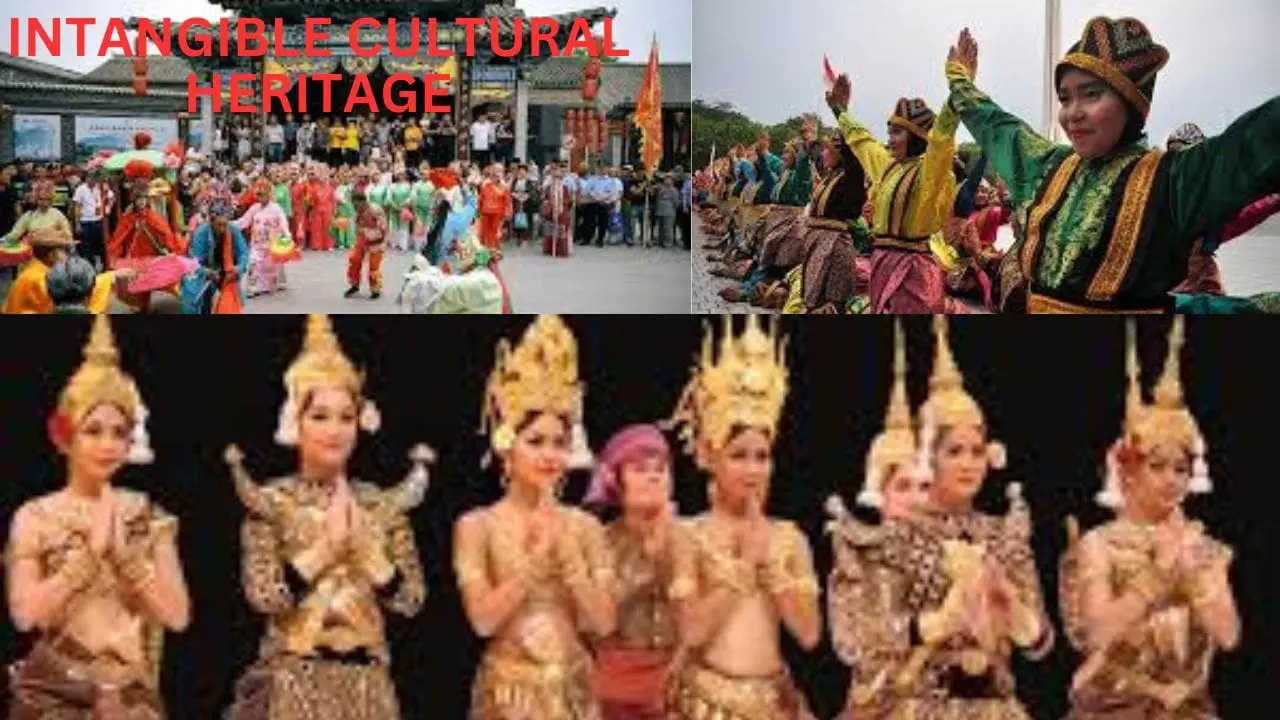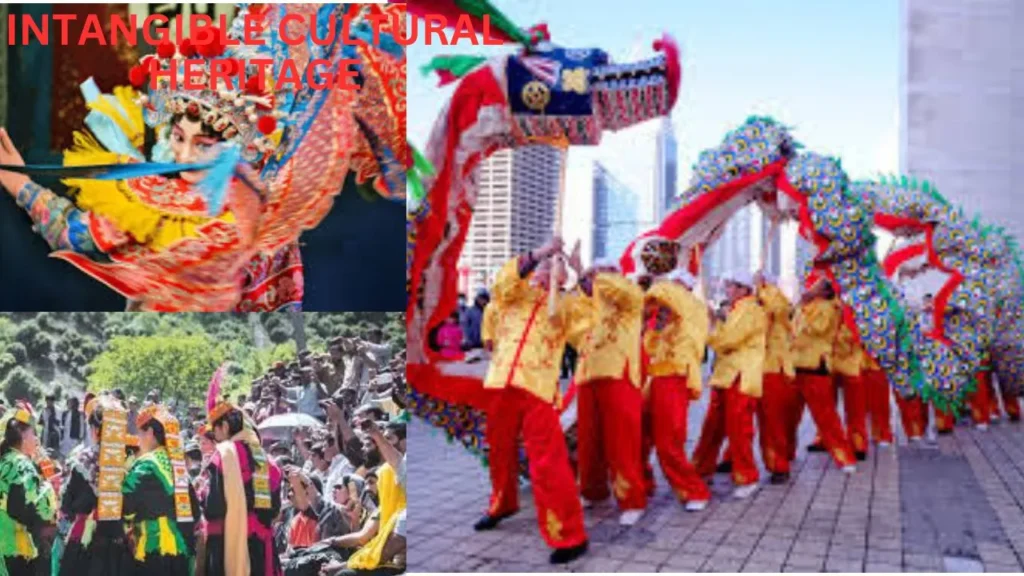
intangible cultural heritage
Admin
- 0
Intangible cultural heritage plays a significant role in defining and shaping the cultural identity of communities around the world. It encompasses a wide range of traditions, rituals, knowledge systems, and expressions that are passed down from generation to generation.
In this article, we will explore the definition of intangible cultural heritage, discuss the importance of safeguarding it, examine examples of intangible cultural heritage from different parts of the world, delve into the challenges involved in its preservation, and explore strategies for transmitting it to future generations.
Exploring the Definition of Intangible Cultural Heritage
Intangible cultural heritage refers to the living expressions and practices that are inherited from our ancestors and are safeguarded and transmitted to future generations. It includes oral traditions, performing arts, social practices, rituals, festive events, traditional craftsmanship, knowledge systems, and traditional environmental practices. It is dynamic in nature as it adapts and evolves over time through social interactions and cultural exchanges.
Intangible cultural heritage is deeply rooted in communities and is an integral part of their cultural identity. It holds immense value for humanity as it promotes diversity, fosters creativity, strengthens social cohesion, and contributes to sustainable development.
The Importance of Safeguarding Intangible Cultural Heritage
Safeguarding intangible cultural heritage is of utmost importance to ensure its continuity and vitality. It helps in preserving the cultural diversity of communities and promotes mutual respect and understanding among different cultures. Safeguarding intangible cultural heritage also contributes to the well-being and development of individuals and communities, as it nurtures a sense of pride and identity.
Moreover, intangible cultural heritage carries immense knowledge and wisdom accumulated over generations. It provides valuable insights into the past and helps in understanding our present. By safeguarding intangible cultural heritage, we safeguard the collective memory of humanity, ensuring that future generations inherit the richness of their cultural heritage.

Examples of Intangible Cultural Heritage Around the World
Intangible cultural heritage can be found in every corner of the globe. Let’s explore a few examples that highlight the diversity and richness of intangible cultural heritage:
- The flamenco music and dance of Andalusia, Spain, encapsulate the essence of Spanish cultural identity and are known for their passionate and rhythmic expressions.
- The traditional tea ceremony in Japan is a highly choreographed ritual that represents harmony, respect, and tranquility.
- The Indigenous art of dot painting in Australia not only showcases incredible artistic skills but also conveys spiritual and cultural beliefs.
These examples demonstrate how intangible cultural heritage reflects the values, beliefs, and practices of different communities and offers unique insights into their ways of life.
Challenges in Preserving Intangible Cultural Heritage
- Preserving intangible cultural heritage is not without its challenges. One of the major challenges is the risk of erosion and loss due to rapidly changing social, economic, and environmental factors. Globalization, urbanization, and modernization can disrupt traditional practices and weaken the transmission of intangible cultural heritage.
- Additionally, the oral nature of many intangible cultural heritage elements poses a challenge as there is a greater risk of forgetting, misinterpretation, or distortion. Language barriers, lack of resources, and insufficient documentation can further hinder preservation efforts.
- Moreover, the intergenerational transmission of intangible cultural heritage can be disrupted by migration, urbanization, and the growing influence of mass media. Without proper safeguarding measures, invaluable knowledge and practices may disappear forever.
Strategies for Transmitting Intangible Cultural Heritage to Future Generations
Efforts are being made globally to safeguard and transmit intangible cultural heritage. Various strategies are being employed to ensure its continuity and accessibility:
- Community participation and involvement play a crucial role in safeguarding intangible cultural heritage. Active engagement of community members, including the younger generation, helps in fostering a sense of ownership and responsibility.
- Documentation and archiving through audio-visual recordings, photographs, and written materials help in preserving intangible cultural heritage for future reference and research.
- Education and awareness programs raise public consciousness about the value and significance of intangible cultural heritage. Integration of intangible cultural heritage into formal and informal education systems ensures its transmission to younger generations.
- International cooperation and exchange of good practices facilitate the sharing of knowledge and experiences in safeguarding and transmitting intangible cultural heritage.
By combining these strategies, we can create a sustainable framework for safeguarding and transmitting intangible cultural heritage, fostering its continuity and accessibility for future generations.
The Role of Technology in Documenting Intangible Cultural Heritage
Technology plays a pivotal role in documenting and preserving intangible cultural heritage. Innovative digital tools and platforms provide opportunities for communities to create digital archives, share knowledge, and collaborate with researchers and experts.
Virtual and augmented reality technologies offer immersive experiences that can bring intangible cultural heritage to life, enhancing understanding and appreciation. Online platforms and social media play a vital role in promoting awareness, engagement, and the dissemination of information about intangible cultural heritage.
However, it is important to strike a balance between technology and the preservation of the authentic and traditional nature of intangible cultural heritage. Technology should be utilized as a tool to enhance preservation efforts, while respecting the essence and integrity of the cultural practices.
What is the concept of intangible heritage?
The concept of intangible cultural heritage encompasses the traditions, practices, expressions, and knowledge that are passed down from generation to generation within communities. It represents the living heritage of humanity, highlighting the diversity and richness of cultural expressions
Intangible cultural heritage includes elements such as oral traditions, performing arts, rituals, social practices, craftsmanship, and knowledge systems that are deeply rooted in the collective memory, identity, and values of communities.
What are the five domains of intangible cultural heritage?
Intangible cultural heritage is classified into five domains, as defined by the United Nations Educational, Scientific and Cultural Organization (UNESCO):
- Oral traditions and expressions
- Performing arts
- Social practices, rituals, and festive events
- Knowledge and practices concerning nature and the universe
- Traditional craftsmanship
These domains provide a comprehensive framework for understanding and categorizing different forms of intangible cultural heritage.

What is intangible cultural heritage also known as?
Intangible cultural heritage is also known by various terms such as living heritage, immaterial cultural heritage, or intangible heritage. These terms emphasize the intangible and dynamic nature of cultural expressions and practices that are transmitted from one generation to another.
How to preserve intangible cultural heritage?
Preserving intangible cultural heritage requires collective efforts and comprehensive strategies. Here are some key measures that can help in its preservation:
- Documenting and archiving through audio-visual recordings, photographs, and written materials for future reference and research.
- Encouraging community participation and involvement in safeguarding intangible cultural heritage.
- Integrating intangible cultural heritage into formal and informal education systems to ensure its transmission to younger generations.
- Supporting training programs and capacity building for practitioners and bearers of intangible cultural heritage.
- Promoting awareness, appreciation, and sustainable practices through campaigns, exhibitions, festivals, and cultural events.
- Developing legal and policy frameworks that recognize and protect intangible cultural heritage.
By implementing these measures, we can preserve and transmit intangible cultural heritage for future generations, fostering cultural diversity and enriching our global heritage.
Conclusion
Intangible cultural heritage is a treasure trove of traditions, knowledge, and practices that reflect the cultural identity of communities. It is essential to safeguard and transmit intangible cultural heritage to ensure its continuity, promote cultural diversity, and foster mutual understanding among different communities.
Efforts must be made at local, national, and international levels to overcome the challenges involved in its preservation. By engaging communities, leveraging technology, and implementing comprehensive strategies, we can successfully transmit intangible cultural heritage to future generations, safeguarding the invaluable legacy of humanity.

